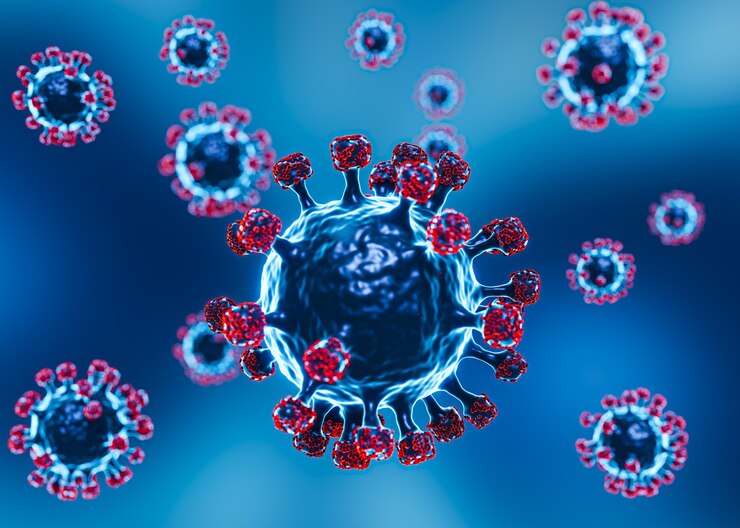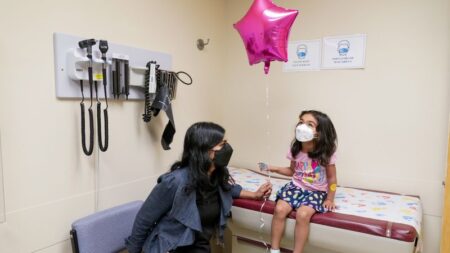The emergence of the 2024 COVID variant (Pi) has introduced new challenges in the ongoing global battle against the pandemic. This variant is noted for its high transmissibility, potential to evade existing immunity, and its impact on public health strategies, making it a critical concern in 2024. Below is a thorough look at what we currently know about this variant, its characteristics, symptoms, vaccine response, and the measures taken to prevent its spread.
Characteristics of the 2024 Variant
Origins and Timeline
The Pi variant was first detected in late 2023 in Southeast Asia, quickly spreading across Europe and North America by early 2024. Scientists have linked Pi to mutations that combine traits from earlier variants, such as Delta’s severity and Omicron’s high contagion. This hybrid nature makes Pi a significant variant of concern.
Mutations and Immune Evasion
- Spike Protein Mutations: Pi’s mutations primarily focus on the spike protein, which allows it to bind more effectively to human cells, making the virus more contagious and capable of evading immune defenses.
- Hybrid Traits: The Pi variant retains both Delta’s ability to cause severe disease and Omicron’s ability to spread quickly.
Increased Transmissibility
- The R0 value (the rate at which one infected person spreads the virus) for Pi is estimated to be between 8 and 10, making it more infectious than previous strains. This high transmissibility has led to its rapid spread across multiple countries, particularly in urban areas with dense populations.
Symptoms of the 2024 Variant
The symptoms of the Pi variant largely mirror those of earlier COVID-19 strains, but with some differences in how the virus impacts different population groups.
- Common Symptoms:
- Cough
- Sore throat
- Runny nose
- Fever
- Fatigue
- Severe Symptoms:
- Difficulty breathing, especially among vulnerable groups (elderly or immunocompromised)
- Chest pain and persistent fatigue
- Asymptomatic Cases: Many cases remain asymptomatic, making the Pi variant harder to detect and contributing to its rapid spread.
How Contagious is the Pi Variant?
- High Spread: Pi is notably more contagious than its predecessors, contributing to its rapid expansion in Southeast Asia, Europe, and North America. It is particularly concerning for areas with low vaccination rates or healthcare systems under strain.
- Asymptomatic Transmission: A large number of Pi variant cases are asymptomatic, increasing the chances of unknowingly spreading the virus.
Vaccine Efficacy Against the Pi Variant
Current Vaccines
- Vaccines like Pfizer and Moderna continue to provide moderate protection against severe outcomes such as hospitalization and death, though their efficacy against mild infections from the Pi variant has decreased.
- Breakthrough Infections: People who are vaccinated but haven’t received a recent booster may experience breakthrough infections, although severe outcomes are still rare.
New Booster Shots
In response to Pi’s mutations, vaccine developers are working on updated booster shots specifically designed to target this variant. These boosters, expected to be available by mid-2024, should provide improved protection against infection and reduce transmission rates.
Preventative Measures for the Pi Variant

Given the high transmission rate of the Pi variant, public health authorities are employing several preventative measures to limit its spread. Below is a detailed breakdown of these strategies:
1. Mask Mandates
Many regions have reintroduced mask mandates, particularly in indoor public spaces such as:
- Public Transportation: Trains, buses, and flights where social distancing is difficult to maintain.
- Schools and Universities: Educational institutions are adopting mask policies to protect students and staff.
- Healthcare Facilities: Hospitals and clinics are enforcing mask use, especially in areas with high Pi variant cases.
Wearing masks, especially N95 or surgical masks, helps to significantly reduce the transmission of the Pi variant in crowded or enclosed spaces.
2. Social Distancing
Public health agencies continue to advocate for social distancing in high-risk areas, especially in public spaces like:
- Restaurants and cafes
- Shopping centers
- Sporting events and large gatherings
Limiting close contact with others, particularly in poorly ventilated environments, is crucial in slowing the spread of the virus.
3. Testing and Quarantine Measures
- Widespread Testing: Regular testing, particularly using rapid antigen tests, is essential for identifying asymptomatic cases early. This helps to isolate individuals before they unknowingly spread the virus to others.
- Quarantine Protocols: Quarantine guidelines are being re-enforced for individuals exposed to the Pi variant, especially if they are unvaccinated or in high-risk groups. In some regions, quarantine durations have been shortened to 5–7 days with a negative test, allowing for quicker reintegration into daily activities while minimizing risk.
4. Travel Restrictions and Testing
- Travel Restrictions: Several countries have reinstated entry restrictions for travelers from Pi variant hotspots. Travelers may be required to provide a negative PCR test before entry or undergo a rapid test upon arrival.
- Testing Requirements: Some regions are also reintroducing mandatory testing for domestic and international travel, especially for unvaccinated individuals.
5. Ventilation and Hygiene
- Improved Ventilation: Public health experts recommend improving ventilation in closed spaces by increasing air circulation to lower the concentration of airborne virus particles. Schools, offices, and businesses are encouraged to install HEPA filters and ensure good airflow.
- Hygiene Practices: Hand sanitizing stations and frequent hand washing remain essential in preventing surface transmission, although airborne spread is more common with the Pi variant.
6. Remote Work and Flexible Arrangements
- Some companies have reinstated remote work policies to reduce the number of employees in office environments. This helps limit contact between individuals and reduces the risk of outbreaks in workplaces.
Treatment Options for the Pi Variant
- Antiviral Medications: Treatments like Paxlovid and Molnupiravir remain effective in treating severe cases of the Pi variant, particularly when administered in the early stages of infection. These antivirals work by preventing the virus from replicating inside the body.
- Monoclonal Antibodies: While some existing monoclonal antibodies are less effective against the Pi variant, new therapies targeting the specific mutations of this variant are in development.
Global Impact and Spread of the Pi Variant
Current Hotspots
The Pi variant has led to new waves of infections in Asia, Europe, and parts of North America. While hospitalization rates are lower compared to the peak of the Delta and Omicron waves, healthcare systems in certain regions are still facing pressure due to the sheer number of cases.
Long COVID Concerns
- Long COVID Risk: Like previous variants, Pi has been associated with long COVID symptoms, such as prolonged fatigue, brain fog, and respiratory problems. This is a major concern for both individuals and public health systems, as long-term care for these patients may be needed.
Conclusion: How to Stay Protected
The 2024 COVID variant (Pi) presents significant challenges, but with the right precautions—such as vaccination, mask-wearing, and testing—its impact can be minimized. Staying informed about public health guidelines and ensuring timely vaccinations and boosters are essential in reducing the spread of this highly contagious variant.
For further updates, visit trusted sources like the CDC and WHO to stay informed about the latest developments.
This version offers a complete, detailed overview of the Pi variant, with a focus on preventative measures, vaccine responses, and treatment options.












